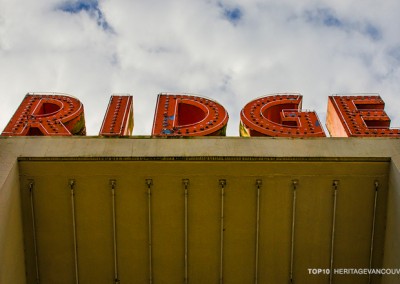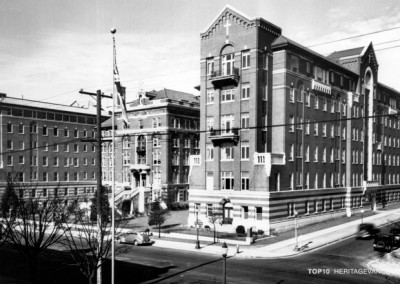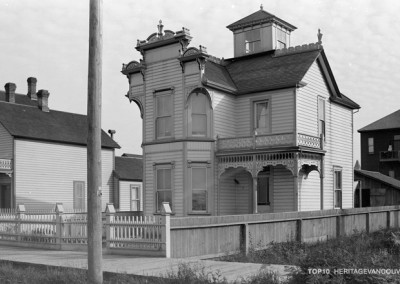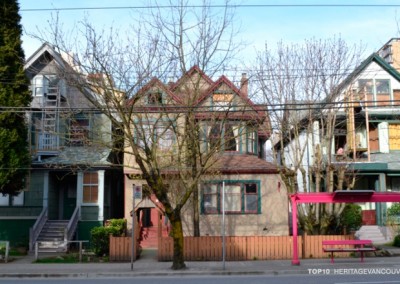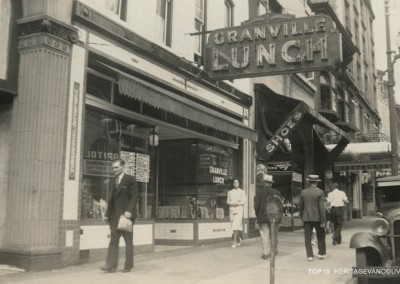We recognize that much progress has been made on the issue of seismic upgrading, and can report improved communication with the Vancouver School Board.
The lack of a comprehensive and detailed plan for the future of Vancouver’s historic schools, however, continues to be a serious threat to many long-standing community landmarks. A number of our historic schools are still facing the risk of demolition; as an illustration of this issue, this year Heritage Vancouver has chosen to focus on Sir James Douglas Elementary at 7550 Victoria Drive.
Threat
What is the threat to our Schools and to Sir James Douglas Elementary?
A draft of the long-awaited Comprehensive Assessment for VSB School Buildings with Significant Seismic Risk was released in October 2011. However, this report contains little more than cost comparisons used, in many cases, as the rationale to replace several historic schools. Seismic upgrading is not always considered the right choice, even when the report states that retention and upgrades to an existing school can be a cost-effective option.
The report also fails to provide a comprehensive and detailed plan about which historic schools the VSB plans to demolish as part of its seismic upgrade process. Instead the Board announces its intentions for individual schools on an ad hoc basis, which leads to uncertainty and diminishes community involvement. By the time the future of a school is announced, the VSB has made a decision and it is typically too late for the community to have meaningful input. This issue is still being dealt with on a case-by-case basis, leading to confusion over the process and why and how decisions are being made.
VSB policy permits schools that operate out of sizeable historic facilities, such as Douglas Elementary, to construct a replacement school beside the existing one, which is then categorised “surplus”. Once the VSB no longer requires a building for school purposes, it can be leased to a tenant who must undertake repairs, seismic upgrades and other improvements at their cost. Given the expense of repurposing historic schools, such an agreement has little appeal for organizations that may otherwise be interested in leasing old school buildings.
Douglas Elementary School will soon become a VSB surplus facility. A replacement school is under construction in the adjacent playground; once the new one is complete, the existing school will become redundant, and unutilised. The VSB, which owns the property, will then offer the 1912 school and its 1950 addition for lease to a new tenant or sell it. The decision to move ahead with building a new school prior to finding an alternate use for the historic building is a serious threat to Sir James Douglas.
VSB has a mixed track record in finding new uses for its schools. The failure to find a tenant led to the demolition of Sir Charles Dickens School in 2008. No tenant has yet been found for Sexsmith School, another example of a new school being built before a new use could be found. On the other hand, VSB did find a tenant, Green Thumb Theatre, for Carleton Hall in 2011, a very significant success in preserving Vancouver’s oldest school that was once slated for demolition.
Contrary to recommendations in a City of Vancouver 2007 consultant study, the VSB has refused to add any schools to the Vancouver Heritage Register. As a consequence, Sir James Douglas, and numerous other historic schools, are not formally recognized, which makes it difficult for the City to work with the VSB to conserve them through appropriate new uses and win-win solutions for seismic upgrading, as well as through exemptions and equivalencies that are offered through the Building Code and the Energy Efficiency Act.
“The Provincial Seismic Mitigation Program aims to make our schools safer in the event of an earthquake. Seismic upgrades present a key opportunity to revitalize school building infrastructure”, VSB statement.
Rather than seismically upgrading its schools, the Vancouver School Board is delaying the upgrade of many of its schools by saying it has insufficient funds. The Victoria Board of Education, with a large number of old schools, has already completed its seismic mitigation program. Vancouver communities are now watching historic neighbourhood schools being slowly replaced by new ones. This is the case of Douglas Elementary – the question now is whether the redundant school will remain standing.
In the past, it has been VSB practice to retain ownership of surplus school land, for the simple reason that the profits from a sale went directly to the Province rather than to the VSB. In the recent budget, however, the province announced that BC school boards could keep the revenue from the sale of their school properties. With this new legislation, unless restrictions are placed on the use of the property, the VSB may be tempted to sell schools like Douglas to developers who would probably seek to demolish the historic school.
Significance
Why is Sir James Douglas School significant?
Sir James Douglas School has heritage value for its architecture, its landmark status, its history, and the people associated with it.
The architecture consists of excellent examples of both Edwardian era Classical Revival and 1950s Early Modern school architecture, which were built side-by-side. The 1912 part of the complex was one of several South Vancouver schools designed by architect Joseph Bowman. Its Classical Revival style, wood frame and brick façade is representative of school architecture in this period. Some features were altered to express the simple, clean lines of the Modern Movement addition, but many original decorative details still remain.
The original eight-room school served a semi-rural working-class community and drew its pupils from much of southeast Vancouver. The building is a rare and tangible century-old reminder of the area’s early history. It also provides the neighbourhood with an attractive, visually prominent landmark and an anchor of continuity, which contribute to the school’s community and heritage value.
The neighbourhood was transformed after World War II with the development of Fraserview, one of the largest veterans’ housing projects in Canada. Enrolment at Douglas exploded from 181 in 1940 to 1,710 in 1956. Students studied on swing shifts and portable classrooms occupied the site. A three-storey addition, designed by Davies & McNab, was built in 1951 with 18 classrooms, including a gym-auditorium and cafeteria. Its quality Modernist architecture, with unornamented columns, windows, spandrels, and flat roof, stands sharply in contrast to the Edwardian wing.
The juxtaposition is associated with the nearby veterans’ housing and the post-war baby boom. The World War II connection is reinforced inside, where a scroll lists students and staff who served in the armed forces. Moreover, the terraced fields and rockeries at the front and behind the parking lot were established in the 1930s, when federal relief programs hired unemployed men for public works projects. This illustrates how the deep scars of the Depression are etched into our institutional landscape. Unfortunately, these landscaping features have been damaged in the new construction on the school grounds.
Position
Heritage Vancouver’s Position
Heritage Vancouver continues to work with the Vancouver School Board on this important city-wide issue.
We urge the VSB to release a comprehensive plan that clearly identifies its decision-making process and course of action for all of its historic schools. The plan should provide a transparent evaluation of options using criteria that should include the heritage value of schools to each neighbourhood.
Once the plan has been released, we encourage the VSB to engage the community on how schools might be conserved and re-used for School Board purposes through either lease to new tenants, or sale to new owners.
We encourage the community to become involved in finding a future use for both Douglas Elementary School and Sexsmith School that would conserve and appropriately re-use these local landmarks.
![4. Schools: Sir James Douglas Elementary (1910-12) [lost]](http://heritagevancouver.org/wp-content/uploads/2012/08/t10-school-douglas-795.jpg)


